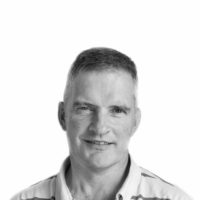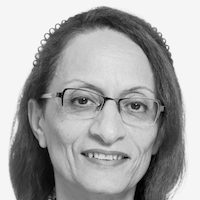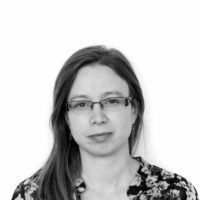
IDEA–IRL
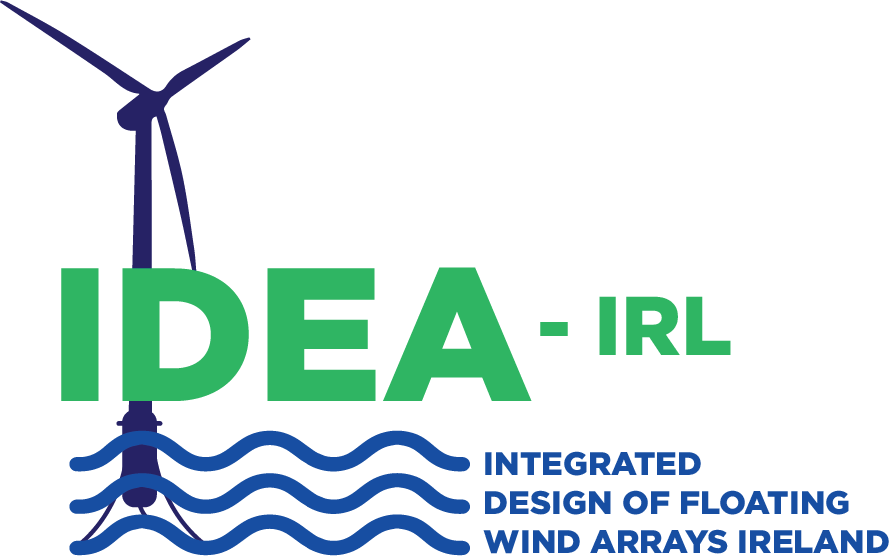
- Title
-
IDEA – IRL (Integrated Design Of Floating Wind Arrays Ireland)
- Start Date
-
February 2023
- End Date
-
January 2026
- Funding Body
-
This research was funded by the Sustainable Energy Authority of Ireland
- Coordinator
-
University College Cork (UCC)
- Project Partners
-
Gavin & Doherty Geosolutions (GDG) & Wind Energy Ireland (WEI)
- External links
- Principal Investigators
-
Dr. Jimmy Murphy, MaREI, University College Cork
- Project Manager
-
Ross O’Connell, MaREI, University College Cork
- Research Area:
-
Floating Offshore Wind Energy
Introduction
Floating wind energy is a rapidly emerging industry. In 2020, GDG and MaREI recognised the need to focus on maximising the social, economic and environmental benefits of array scale deployments to ensure the long-term sustainability of the industry. To explore the associated challenges and opportunities, a Topical Experts Meeting (TEM) of 103 leading floating wind professionals was organised in collaboration with the National Renewable Energy Laboratory (NREL, USA) and IFP Energies Nouvelles (IFPEN, France) under the framework of the IEA Wind TCP. Based on input received during the three-day TEM, a comprehensive plan of work was developed to address the identified pressing international Floating Offshore Wind Arrays (FOWA) R&D requirements. This plan has since been approved by TEM attendees and Task 49 commenced in Q1 2022. IEA Wind Task 49 includes over 100 organisations from 11 countries. GDG are coordinating the IDEA Task along with NREL and IFPEN. IEA Tasks are not directly funded and relies on the alignment of national and international research projects to complete the agreed plan of work. This project will fund Ireland’s contribution to the IEA Wind Task 49 as well as facilitate research into FOWA opportunities specific to Ireland. In this way, IDEA-IRL represents a significant opportunity to place Irish research at the forefront of an international collaborative effort to encourage and facilitate the sustainable development of floating wind energy.
Objectives
The global objective of the IDEA-IRL project is to accelerate the sustainable development of FOWA both domestically and internationally. This will be achieved by building upon key background knowledge and by coordinating and leveraging the international FOWA research effort under the framework of the supported IEA Task 49. Specific objectives include:
- Deliver a set of fully defined reference sites characteristic of the international global floating wind deployment pipeline including all relevant technical, social, environmental and economic parameters.
- Deliver a set of fully open source and customisable floating wind array reference designs including key engineering tool input files, cost and environmental impact models.
- Deliver a Failure Mode, Effects & Criticality Analysis framework for floating wind arrays including for coupled / cascading failures.
- Engage with the international groups developing innovations for the floating wind energy industry, categorise in terms of multidisciplinary impact and ensure that functionality for their development is included in the reference sites and/or reference farm definitions.
- Engage with the international agencies responsible for Marine Spatial Planning to collect open research questions and concerns. Provide responses directly where possible and otherwise ensure that the reference sites and reference farms are defined in such a manner that they enable the required research.
- Apply the work of Task 49 in an Irish context and engage with the local supply chain to provide specific policy recommendations and development pathways.
Raise the profile of floating wind energy technology, related research and expertise in Ireland through the delivery of a multifaceted communications strategy.
Work Packages
Work Package 0 – Management and Communication
This WP is responsible for the overall management of the project and the interface both with the SEAI and IEA Wind Task 49.
Work Package 1 – Reference Sites
This WP focuses on defining the metocean (wind, wave etc), geotechnical (soil, bathymetry etc), socio-ecological factors (mammals/bird populations, ambient noise, migratory patterns, fishing zones, existing/future users of the environment etc) and other site-specific conditions (e.g. distance to shore, port availability, exclusion zones, or grid connectivity) for a range of hypothetical reference sites that are representative of the types of conditions in which the initial phase of commercial scale floating wind may be deployed.
In essence, these are the type of site parameters that a developer would collect and use to inform the project design phase. The development of these reference sites will draw on existing open access datasets, ongoing and previous research projects of participants of IEA Wind Task 49. The input of key stakeholders will be solicited through WP4 to ensure that the reference site are realistic and defined in a manner that will be of use to a broad range of scientific and engineering disciplines. Where data gaps exist, values will be synthesis to ensure full definition of all reference sites.
Sites will be used to inform the design of the reference floating wind arrays in WP 2 and will be made open-source and available to the wider research community to facilitate future multidisciplinary FOWA research. This WP will have an international focus, however, several reference sites will be inspired by Irish sites considered in EirWind and OPFLOW.
Work Package 2 – Reference Farms
A full description at least 10 floating wind farms, will be developed to facilitate R&D activities of the floating wind community using input site data from WP1. These designs will provide standardized baselines upon which future FOWA innovations can be developed and their benefits evaluated.
The scope of the reference designs is to define the array layout and the details of the anchoring, mooring, cabling systems and power take off for a given combination of site conditions and floating wind turbine design. All engineering designs will be validated using commercial software to ensure accuracy and relevance of the designs.
The reference farm designs will be ready for use in array-level simulation tools such as FAST.Farm. The design definitions will also include failure rates for components at the floating array scale, developed in parallel with WP3. Customisable open-source cost, carbon footprint and LCA models will be provided for each reference array design. An expert elicitation process among participants in IEA Wind Task 49 will ensure that component level costs are robust and realistic.
This work package will also liaise closely with WP 4 to ensure that the reference array designs provide a suitable research platform for the development of FOWA innovations and resolving MSP queries.
At least 2 high potential floating wind innovations, identified in collaboration with WP4, will be assessed using the reference farms for their impact on cost, performance and environmental impact.
As well as the reference designs themselves, this WP will be responsible for the generation of a set of best practice guidelines for the multidisciplinary design of floating wind arrays. Thorough collaboration under the framework of IEA Task 49, it is anticipated that these guidelines will for the basis for design standards for floating wind arrays.
Work Package 3 – Array-level failure risks and mitigation
The number of unmanned floating units planned for FOWA is unprecedented in other offshore industries. The likelihood of individual components experiencing failures is significant and there is potential for cascading failures when one turbine loses station within the array. Failures in any part of the system, including the turbine, substructure, or cabling, can have array impacts by altering a unit’s motions, interrupting power production, or necessitating repair operations. Importantly, the necessities for mitigating failures are less clear-cut than other industries due to the unmanned nature of the units; cost trade-offs rather than safety constraints are the driving factor behind choices about redundancy and failure prevention.
This WP will build upon existing knowledge from the fixed offshore wind and other marine industries and will follow the approach of a qualitative failure modes, effects, and criticality analysis (FMECA), with the scope of array-level impacts. The results will serve as a framework upon which quantitative FMECAs can be constructed, which could then be used in probabilistic risk analyses. A dedicated workshop will be arranged to meet the three objectives of this WP as an efficient way to gather experts and perform the proposed analysis.
Work Package 4 – Stakeholder Integration
This WP will identify, characterise, and publish the major research questions faced by the industrial, academic and Marine Spatial Planning (MSP) communities in the development of innovations and the strategic planning for FOWA. Through the deliverables, a feedback loop will be established with the technical work packages to ensure that the reference sites and farms contain a sufficient level of detail and are configured in such a manner to address the identified research needs.
A register of FOWA innovations will be developed and scored using an Analytical Hierarchy Approach to identify innovations with the potential to make the greatest trans-disciplinary impact. A prioritised list will be used to inform the technical developments in WP1-WP3. At least 2 of these innovations will be selected for impact assessment in WP2.
This WP will engage with relevant agencies to understand and categorise the key questions relating to floating wind. This work will not be related to local planning regulations but on cross-cutting topics, for example: the expected farm density (MW/km2), viable power off take options, required port facilities, grid capacity requirements, viable floating farm project capacities, suitable geotechnical / bathymetry, accessibility limits, impact on marine life, impact on the fishing industry etc. Answers to these questions will be provide where possible and requirements will be passed to WP1-3.
Work Package 5 – Irish Pathways
Within EirWind and OPFLOW several tools, literature reviews and stakeholder networks were developed and employed to produce a blueprint for offshore wind energy in Ireland. This WP will build upon these key inputs to account for the rapidly developing legislative, consenting and technological landscapes related to FOWA. Background knowledge will be updated and expanded with expert input received through WP4 and employing the array scale design tools developed in WP2.
These advanced project capabilities will then be used to conduct scenario-based modelling of Irish floating wind development pathways accounting for project scale, development timelines, location and power off take strategy. This analysis will form the basis for specific policy recommendations to support the sustainable development of FOWA in Ireland pre and post 2030. These recommendations will include:
- The likely impact of supporting a demonstration project.
- The suitable level of financial support and/or seabed leasing fee.
- Floating specific amendments to the Marine Planning regime.
- Realistic local content requirements.
- Strategic infrastructure and investment timelines.
- Supports, policies and programs to maximise local content.
This work will include the development of an online supply chain survey and interviews tailored specifically to the Irish context which will be used to inform the analysis.
Team Members Outside MaREI
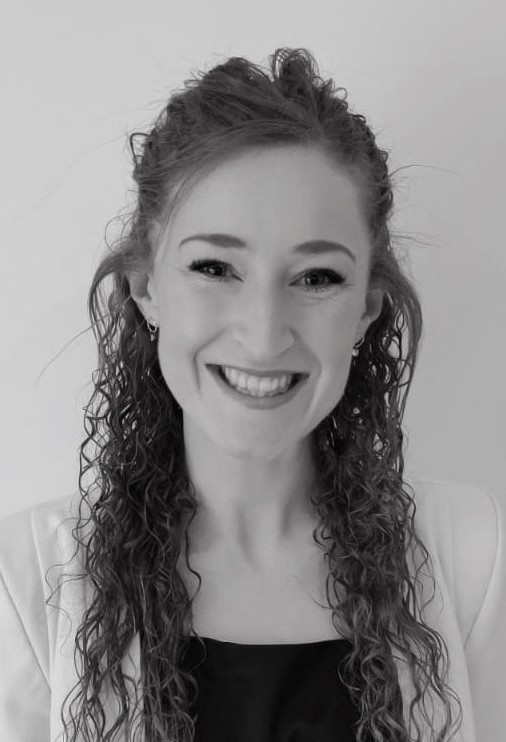 Shauna Creane
Shauna Creane
Senior Geoscientist at Gavin and Doherty Geosolutions Employee
Email: moc.oegdg@enaercs | LinkedIn | Research Gate
Shauna completed an industry-based PhD in Civil Engineering with University College Cork and GDG in 2022. Her research focused on the interaction between seabed hydrodynamics and morphodynamic change in the Irish Sea, and the implications for offshore infrastructure. At GDG, Shauna leads the Metocean Team. She applies her technical skills to develop and utilise robust hydrodynamic, spectral wave and sediment transport numerical models for many nearshore and offshore engineering applications. These include metocean assessments, weather downtime assessments and seabed mobility assessments. Shauna has undertaken the role of ‘Client Representative’ for multiple commercial offshore wind farm geophysical campaigns and the role of ‘Chief Scientist’ on many geophysical/oceanographic offshore research surveys.
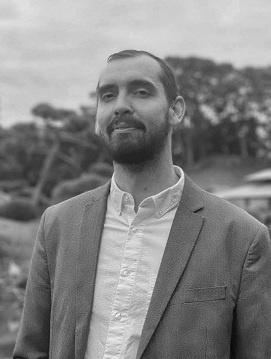 Chris Wright
Chris Wright
Senior Offshore Engineer at Gavin and Doherty Geosolutions Employee
Email: moc.oegdg@thgirwc | LinkedIn | Research Gate
Graduating from University College Cork (UCC) with a PhD in the design, simulation and testing of floating wind platforms, Chris has worked on a broad range of floating wind projects during his over ten years in this industry: from the MW scale demonstration deployments of the Fukushima FORWARD project in Japan through to a global pipeline of GW scale commercial wind developments. His primary area of expertise is mooring design & analysis, floating integrated load assessment and hull hydrodynamic design. Chris is leading the floating wind team in GDG.
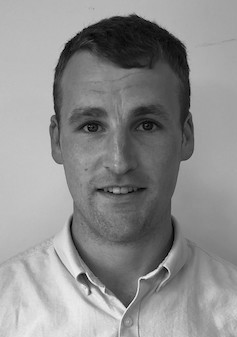
Greg Bohan
Senior Offshore Consultant at Gavin and Doherty Geosolutions Employee
Email: moc.oegdg@nahobg | LinkedIn
Greg is an Engineering and Economics graduate from Galway, working as a Senior Offshore Consultant with GDG since January 2022. Before joining GDG, Greg worked as a Policy Analyst for Wind Energy Ireland for 2 ½ years, in a role that allowed him to gain an in-depth understanding of the Irish offshore wind market and policy landscape.
Since joining GDG, Greg’s role has primarily focused on project management across a wide variety of scopes including Foreshore Licence Application preparation, G&G Survey Scoping and Management, Bird and Marine Mammal survey procurement and management, Ports studies, and ongoing Marine Advisory support.
Greg has also worked on a number of research projects, as a previous Member of IEA Task 26 (Cost of Wind), and a current member of IEA Task 49 and the IDEA-IRL project, looking to accelerate the sustainable commercialization of floating wind arrays. Greg also contributed to GDG’s work with DECC in support of the RePower EU plan.
Greg’s role also has a strong policy focus, and he has worked on a number of policy reports and consultation responses.
 Dáire Horgan
Dáire Horgan
Research & Development Analyst at Wind Energy Ireland
Dáire is the Research & Development Analyst for Wind Energy Ireland, working under the guidance of Dave Linehan. Dáire is responsible for project managing some of WEI newest initiatives, including the new Graduate & Career Development Programme, and grant funded research programmes. Dáire transitioned into the renewables industry following a successful career within the hospitality industry. He is a graduate of University College Dublin with a keen interest in the fight against climate change.

Dave Linehan
Head of Research at Wind Energy Ireland
Dave is the Head of Research at Wind Energy Ireland. As a member of WEI’s management team, part of his remit is to oversee evidence-building, policy-priming research across all aspects of on and offshore wind and other sustainable technologies. He is responsible for leading engagement with universities and the academic sector and collaborations on skills development, education, and research. He also manages aspects of WEI’s policy work. He is a graduate of University College Cork, and a Chartered Engineer.
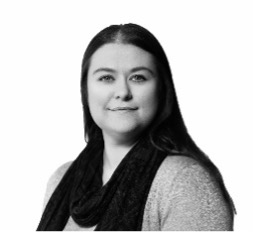
Caoimhe McCarthy
Senior Policy Analyst at Wind Energy Ireland
Caoimhe joined the Policy Team at Wind Energy Ireland at the beginning of 2022 as a Senior Policy Analyst, leading on offshore wind development for Ireland.
Caoimhe has over 10 years’ experience working in the energy sector across the UK and Ireland, spending a number of years as part of the Energy & Low Carbon Team at Highlands and Islands Enterprise in the North of Scotland, based out of Inverness. There her roles spanned offshore renewables, predominantly offshore wind, as well as wave and tidal, wider energy infrastructure, port and supply chain development, as well as supporting the integration of low carbon energy systems projects and community energy generation.
She moved back to Ireland in 2018 where she joined the Sustainable Energy Authority of Ireland, working with sustainable energy communities and supporting the development of policy for the Renewable Electricity Support Scheme in relation to community owned projects and benefit funding. Caoimhe holds a degree in Geography, Planning & Environmental Policy, and a Masters in Sustainable Energy & Green Technologies from UCD.
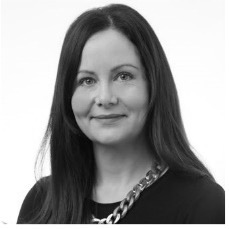
Lisa-Ann Crookes
Communication Manager
Lisa-Anne is a communications professional with more than 20 years’ experience in journalism and public relations.
She was a senior reporter for regional and national newspapers in Ireland for eight years before moving into communications and PR. She worked on campaigns at a local government level with councils in the UK on topics as diverse as adoption, adult social care, the 2012 Olympics, Royal visits, election campaigns, housing, and homelessness.
She is currently employed as the Communications Manager with Wind Energy Ireland where she led on the organisation’s education work, internal communications and support the promotion of our events, research, and training functions.
Deliverables
WP1: Reference Sites
WP1 D1F: Reference Site Technical Report
WP1 Reference Site Technical Report – Summary Report
WP2: Reference Farms
WP2-D1: Reference Array Design Basis
WP3: Array-level Failure Risks and Mitigation
WP4: Stakeholder Integrations
WP4-D2A: MSP consultation year 1
WP4 -D2B: Innovation Ranking Report
WP5: Irish Pathways
IDEA-IRL Podcast
Ep.2 – Marine Spatial Planning With MARA
Ep.3 – Wet Storage Floating Off Shore Wind Turbines
Contact
Email: ei.ccu@LRI-AEDI
Sign up for the IDEA-IRL mailing list here if you would like to keep up with their work.




